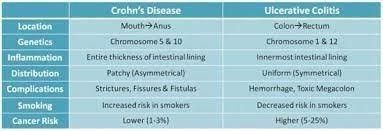The nurse is preparing to send a client to the cardiac catheterization lab for an angioplasty. Which client report is most important for the nurse to explore further prior to the start of the procedure?
Drank a glass of water in the past 2 hours.
Reports left chest wall pain prior to admission.
Experiences facial swelling after eating crab.
Verbalizes a fear of being in a confined space.
The Correct Answer is C
The correct answer is: C. Experiences facial swelling after eating crab.
Choice A Reason: Drinking a glass of water in the past 2 hours is not typically a concern unless the patient has been instructed to fast. For most cardiac catheterization procedures, patients are asked to fast for a certain period before the procedure to reduce the risk of aspiration. However, small sips of water may be allowed with medications.
Choice B Reason: While reports of left chest wall pain are clinically significant and warrant investigation, they are not as immediately concerning for the angioplasty procedure itself. Chest pain is a symptom that may have led to the decision to perform angioplasty but does not pose an immediate risk of complication during the procedure as an allergy might.
Choice C Reason: As previously mentioned, experiencing facial swelling after eating crab is indicative of a shellfish allergy. This is important because the contrast dye used in angioplasty may contain iodine, and patients with shellfish allergies could have an increased risk of an allergic reaction to the iodine in the dye. It is essential to explore this further to take necessary precautions, such as premedication with antihistamines or using a different contrast agent.
Choice D Reason: Verbalizing a fear of being in a confined space, or claustrophobia, is a psychological concern that should be addressed to ensure the patient’s comfort during the procedure. However, it does not pose a direct risk to the safety of the angioplasty procedure like an allergic reaction does. Managing patient anxiety is important, but it is not the most critical factor to explore prior to the procedure.
Nursing Test Bank
Naxlex Comprehensive Predictor Exams
Related Questions
Correct Answer is B
Explanation
A) Incorrect - While discussing the potential for asymptomatic partners is important, addressing the client's concerns and providing accurate information is more immediate.
B) Correct- Syphilis and other STIs are important public health concerns. The nurse should provide accurate information, answer questions, and correct any misconceptions the client might have. This approach supports the client's knowledge and understanding of their health condition and prevents the spread of misinformation.
C) Incorrect - While discussing contraceptives is relevant to sexual health education, it may not directly address the client's concerns about their prior infections.
D) Incorrect - Notifying local health departments is important for reporting communicable diseases, but it doesn't directly address the client's current situation and concerns.
Correct Answer is B
Explanation
A) Incorrect- Anal abscesses and fistulas are more commonly associated with Crohn's disease than with ulcerative colitis. Crohn's disease can involve the entire thickness of the bowel wall and create tunnels or connections (fistulas) between different parts of the gastrointestinal tract.
B) Correct- Rectal bleeding is a common symptom of ulcerative colitis, as the inflamed tissue can bleed easily.
C) Incorrect- Constipation is not a common characteristic of Crohn's disease. In fact, both ulcerative colitis and Crohn's disease can lead to a range of bowel habits, including diarrhea and constipation, depending on the extent and location of inflammation.
D) Incorrect- Both ulcerative colitis and Crohn's disease are inflammatory bowel diseases (IBD) that involve chronic inflammation of the gastrointestinal tract. Ulcerative colitis primarily affects the colon and rectum, causing continuous areas of inflammation and ulceration. Crohn's disease can affect any part of the gastrointestinal tract, from the mouth to the anus. It often involves patches of inflammation with healthy tissue in between, and it can affect different layers of the bowel wall.

Whether you are a student looking to ace your exams or a practicing nurse seeking to enhance your expertise , our nursing education contents will empower you with the confidence and competence to make a difference in the lives of patients and become a respected leader in the healthcare field.
Visit Naxlex, invest in your future and unlock endless possibilities with our unparalleled nursing education contents today
Report Wrong Answer on the Current Question
Do you disagree with the answer? If yes, what is your expected answer? Explain.
Kindly be descriptive with the issue you are facing.
